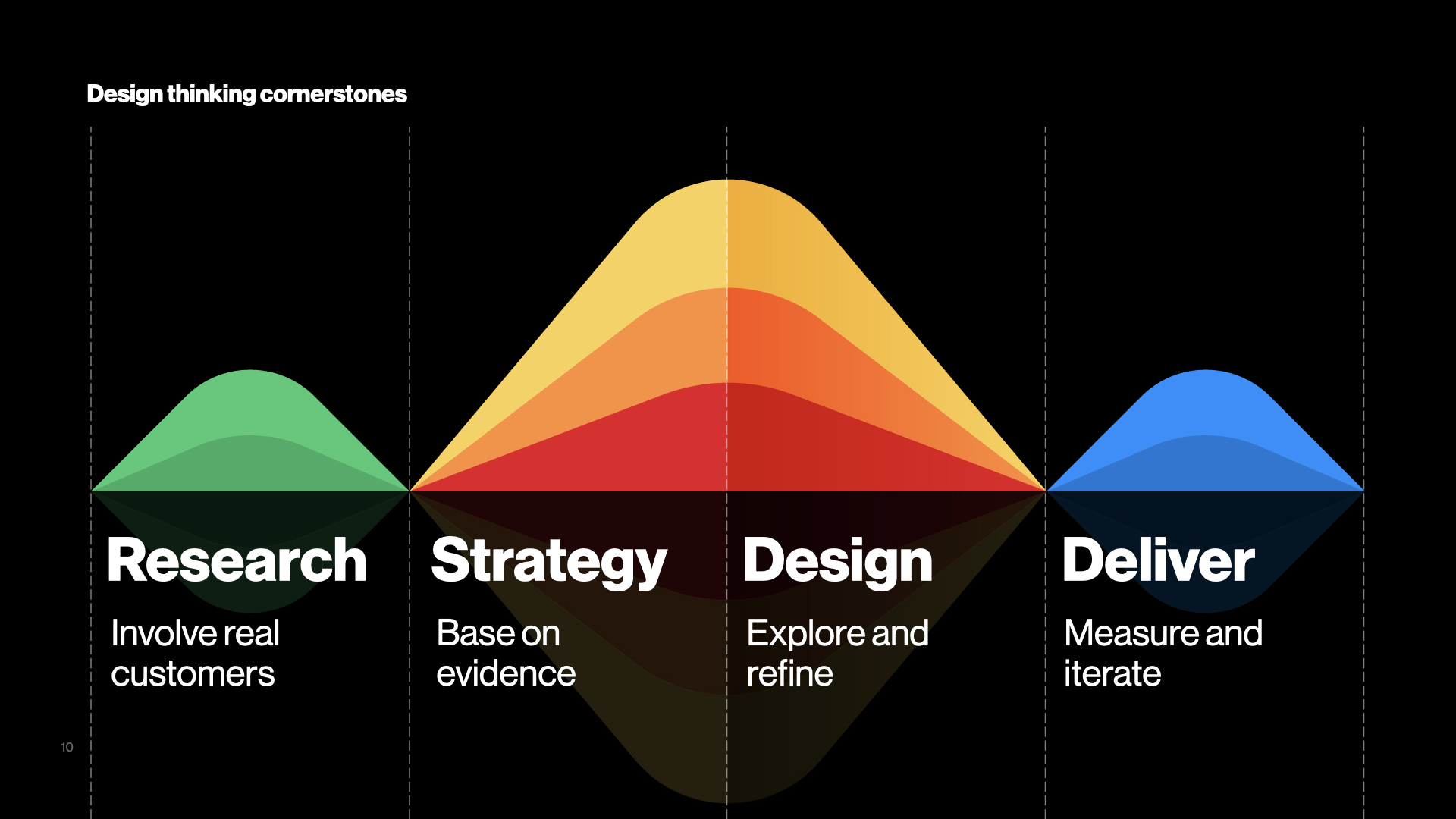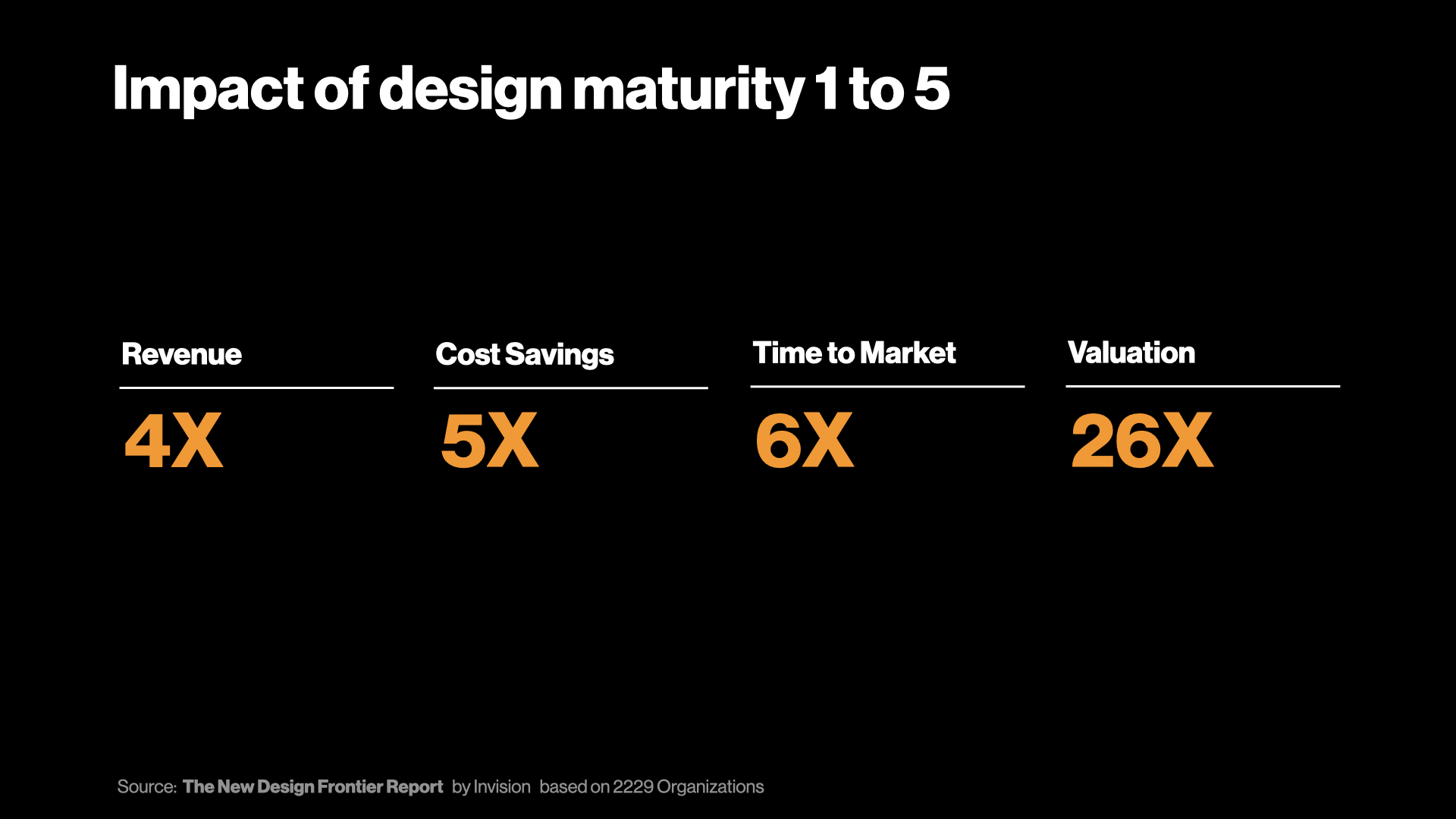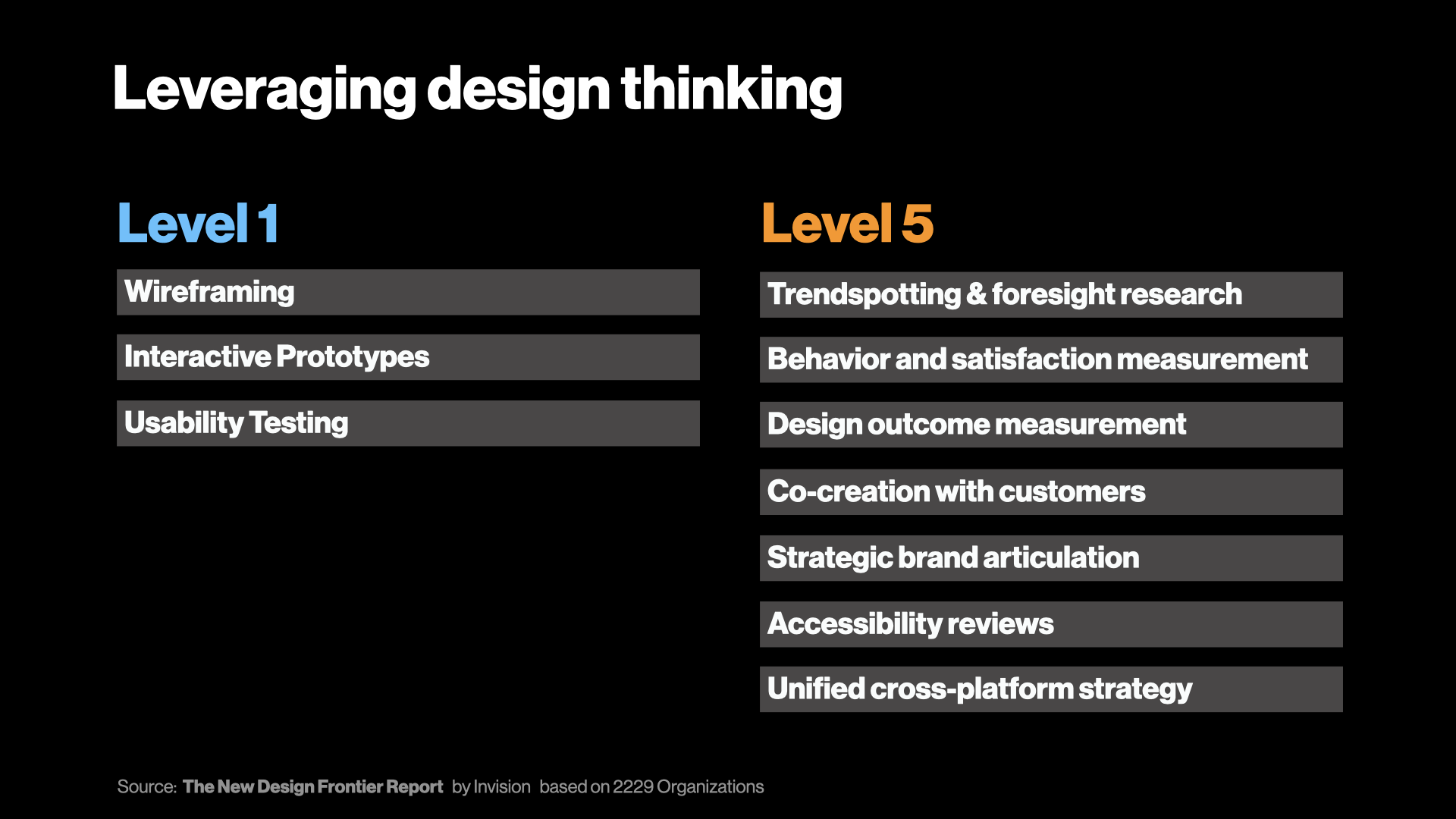
What is a design-led organization?
Design-led organizations use evidence-driven design — also known as design thinking — to resolve product, service, and business challenges with meaningful solutions. Evidence-driven design combines free-flowing idea generation with user insights to create great products.

Because of this robust design influence within the company, you’ll typically find designers on the leadership team that are heavily involved in projects across the organization.
However, mature design-led companies apply design to more than just product development. T-mobile, for example, asks all internal team members to incorporate design thinking into their work. And large tech companies, such as Apple, use scorecards to make business decisions by evaluating customer satisfaction and service performance
With evidence-driven design, organizations can have confidence that their customers and employees have positive user experiences interacting with the brand.
How can design be evidence-based?
Evidence-driven design is the balance of science and art. User insights and market analysis provide concrete evidence (the science) to create a design strategy. Expert designers then render the strategy into beautiful designs (the art) to create products people love.
Understanding what customers really want — before development or launch— helps companies save money, achieve business objectives, and delight their audiences. Because of this, companies that adopt an evidence-driven design approach have several advantages over those that do not.
The advantages of a design-led business strategy
Design-driven companies outperform competitors on customer experience (CX), according to Forrester, and these companies are reaping major benefits because of the following:
- Higher profitability—Evidence helps teams create the right products and experiences the first time — spending fewer resources fixing or updating the product post-launch.

According to a 2020InVision report, “companies that invest in evidence-driven design practices see four times the revenue increase, five times the cost savings, six times faster time to market, and twenty-six times higher valuation than companies with low design maturity.”
- Increased retention and loyalty—Acquiring a new customer is about five times more expensive than retaining an existing one. Companies that invest in evidence-driven design can keep customers engaged by designing experiences with them in mind.
- Aligning internal teams— “Evidence aligns people because it gets them away from opinions and instead gets them focusing on user needs” — David Truog, VP, Principal Analyst, Forrester.
Research-based evidence gives teams a single source of truth. This data source allows teams to collaborate and easily base decisions on customer observations and trend analysis rather than opinions.
Steps for improving and building a design-driven organization
Teams can use these tips to embrace evidence-based design for the first time or derive even more value from their current design practices:
1. Assess your company's current design maturity
To determine your level of maturity, check out the InVision design maturity model or contact the Blink team.
Companies with different maturity levels — level 1 being the least mature and level 5 being the most mature — can increase the value they get from design by implementing practices based on their maturity:

- For a Level 2 organization that struggles with prioritizing its UX initiatives, an investment in foundational user research can help determine which features, products, or services to invest in first.
- A level 3 organization might use different forms of evidence to round out their current research practice with additional methodologies, such as qualitative or quantitative research. At this level, companies can develop ways to understand what they know about customers and supplement those findings.
- Level 4 organizations can use customer telemetry and usage data to measure customer outcomes more effectively. These programs can allow them to see how the experience works for different customer segments and deliver more personalized experiences to those segments.
2. Do an inventory of your current team
Once you’ve determined your organization’s maturity level, consider who you already have on your team. For example, are you able to conduct research? Do you have designers available? What areas of expertise do you need to add?
A well-rounded design team typically has design, research, product management, content strategy, SEO, and development integration abilities. Hiring in-house or working with a staffing agency or consulting firm such as Blink are great ways to fill the gaps in your design team.
3. Make the business case for design, and get the necessary investments
Making a business case for design boils down to figuring out what financial impact it will have on the company. First, calculate the ROI of a design project by estimating the net of the money the design project will gain minus the cost to create and implement the new design.

4. Continue to check in with your team and modify processes as needed
Building a sustainable evidence-driven design process takes time and iteration. So, once these processes start getting established, it’s essential to ensure they run and perform smoothly. To maintain momentum and continually improve, companies should:
- Perform retrospectives with product teams, and take necessary actions
- Look for ways to use evidence-driven design to solve other business problems
- Continue to assess organizational design maturity and make plans to improve
Ready to level up your design practice?
An evidence-driven design approach helps teams set the right priorities, create better experiences, and increase business performance. If you’d like help figuring out your current design maturity and the next steps for leveling up your design practice, our team can help. Contact our UX research and design team to get started!


